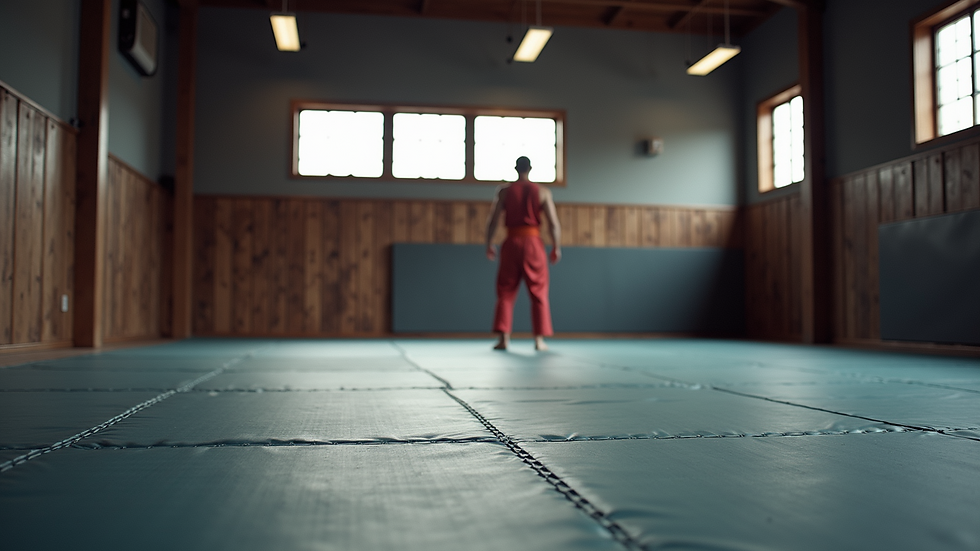The Evolution of Martial Arts in Modern Times
- Steeyle Levine

- Jun 5
- 4 min read
Martial arts have a rich history, tracing back thousands of years. What began as ancient fighting techniques for combat and survival has transformed into a multifaceted practice in the modern world. Today, martial arts encompass self-defense, sport, fitness, and cultural expression. This post delves into the evolution of martial arts in modern times, exploring key developments, popular styles, and their societal impact.
The Historical Context of Martial Arts
To understand the evolution of martial arts, we must first explore their historical roots. Various martial arts systems worldwide originated as methods for defense or hunting. For example, Chinese martial arts date back over 4,000 years, with styles like Wing Chun and Tai Chi developed from both practical combat needs and philosophical principles.

The samurai class in Japan also contributed significantly to the evolution of martial arts through disciplines such as Kendo and Jujutsu. These practices integrated weaponry and unarmed combat, focusing on mental discipline and respect, which are still foundational in modern martial arts philosophy.
As global communication improved, martial arts systems began to influence each other. The incorporation of techniques from various cultures led to innovative styles that adapted old principles to new contexts.
Martial Arts in the 20th Century
The 20th century marked a significant turning point for martial arts. After World War II, martial arts spread globally due to returning veterans who had trained abroad. Styles like Judo, Karate, and Taekwondo gained immense popularity in the West as practitioners sought the discipline and fitness benefits associated with these arts.
Statistics show that participation in martial arts increased significantly during this time. By the late 1960s and early 1970s, martial arts schools began to appear across the United States, helping to popularize the culture.

Martial arts films also played a pivotal role in increasing interest. Iconic movies featuring Bruce Lee, such as "Enter the Dragon," showcased martial arts techniques, igniting a passion for these arts in popular media. These films helped solidify martial arts as both a sport and an exhilarating form of entertainment.
The Rise of Mixed Martial Arts (MMA)
One of the most significant developments in martial arts in modern times is the emergence of Mixed Martial Arts (MMA). In the early 1990s, the Ultimate Fighting Championship (UFC) was established, showcasing fighters from various disciplines competing against one another. This platform led to the blending of techniques, as martial artists integrated traditional techniques with those learned in the ring.
MMA influenced several traditional martial arts styles, pushing practitioners to evolve their techniques. Fighters became interested in disciplines like Brazilian Jiu-Jitsu, Muay Thai, and Western boxing to stay competitive. This led to a renaissance of classic martial arts as they adapted or combined their methods to enhance their effectiveness.

The growth of MMA has spurred an increase in training facilities and programs across the world. Gyms with a blend of disciplines have opened, catering to the growing number of enthusiasts seeking to learn self-defense or simply get in shape. Statistics from industry reports indicate that MMA participation has increased by nearly 30% in the last decade alone.
The Cultural Impact of Martial Arts
Martial arts have also made a cultural impact, serving as a bridge connecting different societies. They promote values like respect, humility, and discipline. Furthermore, they offer a sense of community, allowing practitioners to connect with individuals worldwide who share similar interests.
Martial arts have found their way into schools and universities as forms of physical education. Programs teaching not only self-defense but also life skills help instill values in young practitioners. Many local and international competitions bring martial artists together, fostering camaraderie and cultural exchange.
Programs like the 10th Planet Jiu Jitsu system focus on teaching practical techniques often appealing to modern training philosophies. They emphasize adaptability and creativity—traits that mirror the evolution within martial arts as a whole.
The Future of Martial Arts
As we move further into the 21st century, the evolution of martial arts shows no signs of slowing down. Current trends suggest a growing interest in wellness and mental health, which will deeply influence how martial arts evolve. Practices promoting mindfulness, such as Tai Chi or Qigong, are gaining popularity.
Moreover, the rise of technology offers new training methods. Virtual reality (VR) and augmented reality (AR) in training have the potential to reshape the learning experience. Imagine training with a virtual instructor or competing against an animated opponent, making martial arts training more engaging and accessible.
The Ongoing Adaptation and Transformation
The fusion of traditional practices with modern sensibilities continues to shape martial arts. Styles emerge, evolve, and disappear, but the core principles remain—self-improvement, discipline, and respect.
As martial arts grow in popularity, they can create stronger communities and promote healthier lifestyles among practitioners. Schools and organizations must adapt to these changes, maintaining quality instruction while being open to innovation.
In summary, the evolution of martial arts—from ancient techniques honed for survival to diverse modern practices reflecting cultural changes—provides valuable insights into human nature. Practitioners must remain informed and open-minded as martial arts adapt to the ever-changing world around us.

Martial arts have come a long way and will continue to evolve. Whether you're a practitioner or simply fascinated by its history, understanding its evolution can offer profound appreciation for this ancient practice. As you explore the world of martial arts, consider how you can engage with its rich heritage while embracing its future developments.




Comments